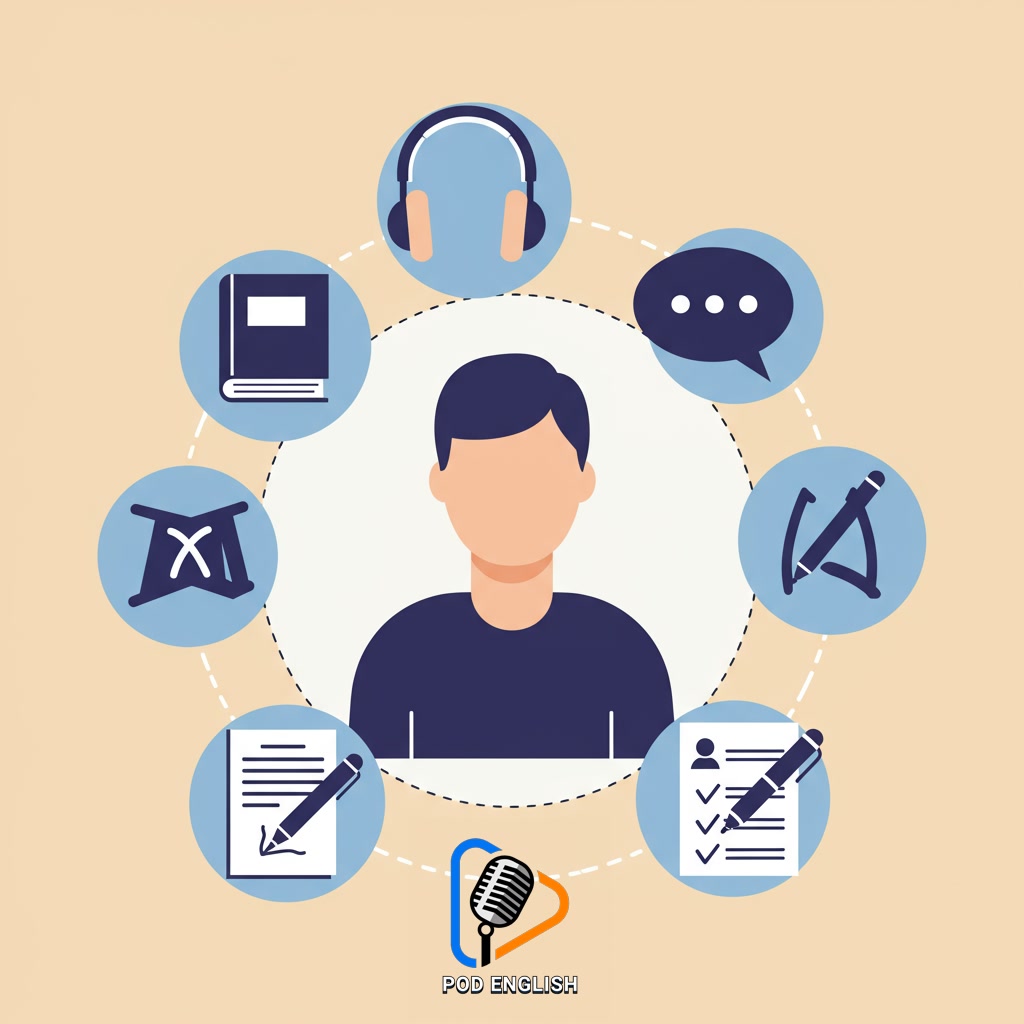Learn English
Cross-Training Secrets to Boost English Learning

This content explores effective strategies for improving English proficiency. It reveals diverse techniques, similar to cross-training in athletics, to enhance various language skills simultaneously. By employing these varied methods, individuals can significantly accelerate their progress in learning English.
Table of Contents
- Section 1: Understanding the Cross-Training Concept for English Learning
- Section 2: Why Mixing Skills (Reading, Writing, Listening, Speaking) is Crucial
- Section 3: Diversifying Your Learning Resources and ‘Equipment’
- Section 4: Integrating English ‘Workouts’ into Your Daily Routine
- Section 5: Targeting Weaknesses and Building ‘Language Strength’
- Section 6: Assessing Progress and Adjusting Your Cross-Training Plan
Section 1: Understanding the Cross-Training Concept for English Learning
Cross-training, a concept borrowed from sports, means combining different exercises to improve overall fitness and target various muscle groups. Applied to English learning, this concept is incredibly powerful. Instead of focusing on just one area, like only reading or only grammar, cross-training involves actively engaging with multiple aspects of the language simultaneously. This means mixing activities like listening to podcasts, practicing speaking with a partner, writing short texts, studying vocabulary lists, and doing grammar exercises. Just as an athlete builds strength and endurance through varied workouts, an English learner builds comprehensive language proficiency by working on reading, writing, listening, and speaking, along with grammar and vocabulary, in an integrated way. This approach ensures balanced development and keeps the learning process dynamic and effective.

Understanding the Cross-Training Concept for English Learning
Section 2: Why Mixing Skills (Reading, Writing, Listening, Speaking) is Crucial
Building on the concept of cross-training, applying this to English learning means actively integrating the four core skills: reading, writing, listening, and speaking. Practicing each skill in isolation provides foundational strength, but true fluency and comprehensive understanding emerge when these abilities are mixed and used together, just as they are in real-world communication. This integrated approach reinforces learning across different modalities – what you read can inform your writing, what you hear can improve your speaking, and so on. Engaging multiple parts of your brain simultaneously makes connections stronger and retention better, leading to faster progress and a more robust command of the language as a whole. Therefore, consciously combining these skills is not just beneficial, but absolutely crucial for effective and accelerated English learning.

Why Mixing Skills (Reading, Writing, Listening, Speaking) is Crucial
Section 3: Diversifying Your Learning Resources and ‘Equipment’
Building on the concept of integrating the four core skills, truly applying cross-training to English learning means actively diversifying the resources and ‘equipment’ you use. Instead of relying solely on textbooks or one specific app, explore a wide range of materials. Listen to podcasts and music, watch movies and series, read articles and books on various topics, use different language learning apps, engage in online forums, and practice speaking with language partners or tutors. Each type of resource acts like a different piece of training equipment, targeting different aspects of your English proficiency – vocabulary acquisition, listening comprehension, grammar application, fluency, and cultural understanding. Using a varied toolkit prevents monotony, keeps your brain engaged, and ensures you develop a well-rounded command of the language, just as an athlete uses diverse exercises and gear to build overall physical fitness.

Diversifying Your Learning Resources and ‘Equipment’
Section 4: Integrating English ‘Workouts’ into Your Daily Routine
Building on the concept of integrating the four core skills, truly applying cross-training to English learning means actively diversifying the resources and ‘equipment’ you use. Instead of relying solely on one method, consciously weave different activities into your daily schedule. This doesn’t require massive blocks of time; even short, focused bursts can be effective. For instance, listen to a podcast during your commute, read a short article during a coffee break, practice speaking aloud while doing chores, or write a quick journal entry before bed. The key is consistency and variety. By scattering these diverse ‘English workouts’ throughout your day, you keep your brain engaged in different ways, reinforcing learning and preventing monotony, much like an athlete varies their training to improve overall fitness and avoid plateaus.

Integrating English ‘Workouts’ into Your Daily Routine
Section 5: Targeting Weaknesses and Building ‘Language Strength’
Building on the concept of diversifying resources, cross-training specifically allows you to pinpoint and address your weaker English skills. Just like an athlete identifies which muscles need more work or which techniques need refining, you can use varied activities – maybe focused listening exercises if comprehension is weak, or dedicated speaking practice groups if fluency is a challenge. By deliberately selecting activities that target these specific areas, you build “language strength” not just in your strong suits, but across all dimensions of English proficiency. This targeted approach ensures balanced development, preventing one weak area from holding back your overall progress and making you a more robust communicator.

Targeting Weaknesses and Building ‘Language Strength’
Section 6: Assessing Progress and Adjusting Your Cross-Training Plan
Building on the concept of diversifying resources, cross-training specifically allows you to pinpoint and address your weaker English skills. Just like an athlete identifies which muscles need more work, you must assess your language proficiency regularly. This involves testing yourself, seeking feedback, and honestly evaluating your performance in listening, speaking, reading, and writing. Once you’ve identified areas for improvement, the power of cross-training comes into play: adjust your plan. If listening is a challenge, dedicate more time to podcasts and audiobooks. If speaking feels weak, prioritize conversation practice. Your cross-training plan isn’t static; it’s a dynamic tool that you refine based on your ongoing progress and evolving needs, ensuring balanced and effective skill development.

Assessing Progress and Adjusting Your Cross-Training Plan













